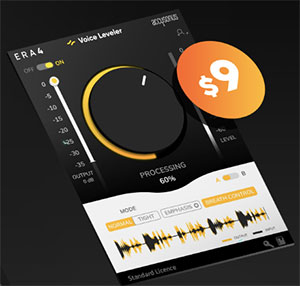Achieving a well-balanced midrange in a recording is one of the biggest challenges of mixing. It is one of the factors that can separate a great mix from a mediocre one. A number of producers especially those who are starting out are struggling in this area.
If paying for a professional mix engineer isn’t an option, there are still ways for a busy mix to shine. Identifying which is essential and which is not is the first step to improving clarity in a mix. Once you have pointed out the core instruments of the song, the next step is to identify where they sit in the frequency spectrum.
Read more about this here: https://theproaudiofiles.com/midrange-in-a-busy-mix/
Archives for October 2019
The Best Audio Interfaces Under $200
A lot of things have changed because of technology. The things we can do today couldn’t be done by the best audio engineers 70 years ago. Now we can record, edit, mix, and master pro-level music all from our bedroom because of audio interfaces. Without it, making music is more difficult and may not sound as good.
An audio interface is a little device that makes home production possible. You plug it into your computer, usually via USB, and then plug your instruments and microphones into it. This transmits the sound you record to your digital audio workstation.
Read more about this here: https://www.audio-issues.com/audio-production/best-audio-interfaces-under-200-2/
Accusonus Voice Leveler Only $9 During Halloween Sale
 Accusonus has put their Voice Leveler plugin product on sale for only $9 as part of their Halloween sale. That’s crazy, considering Voice Leveler normally sells for $59!
Accusonus has put their Voice Leveler plugin product on sale for only $9 as part of their Halloween sale. That’s crazy, considering Voice Leveler normally sells for $59!
The sale runs from today (Oct 25th, 2019) until Nov 8th.
So what is Voice Leveler?
Well, like ALL the plugins in the Accusonus ERA Bundle, is a single-knob plugin that makes it insanely easy to apply. Voice leveler, as the name implies, allows you to easily and quickly even out inconsistent volume in a vocal recording.
Why would I need it?
So let’s say that while you are recording a vocal, you make some mistakes and have to record it with several takes. It is super common for the different sections to have different loudness levels. That’s because you might not have been exactly the same distance from the mic every time you recorded a section.
This problem gets even worse when recording over several days. I JUST finished a long video project where I was narrating a tutorial. When I exported the audio for editing, the levels were VASTLY different from one day’s recording to the next. This same thing is really common with audio books, podcast recordings, or any vocal recording where it isn’t all done in one single “take” or session.
Normally you’d have to manually select each section and try to adjust the volume to match that of the previous audio. This can take hours.
With Voice Leveler, select all the audio and with one click of the button, you can even out all your audio at once. And the single knob makes it unbelievably easy to dial in just the right amount of the effect.
CLICK HERE to find out more and snag your Voice Leveler plugin for $9 before the sale is over. You can watch a video about it and hear Voice Leveler in action.
Voice Leveler is part of the Accusonus ERA Bundle, which I reviewed just a few weeks ago.
Choosing The Right Microphone For Your Studio: Mic Types
A microphone is one of the first things any new engineer, producer, or studio operator needs for voices and acoustic instrument recordings. There are three types of microphones: dynamic, ribbon, and condenser mics. It would be helpful for recordists and studio operators to know as much as possible about choosing the appropriate microphone for their needs.
Depending on the size of the studio, you may get by with a single all-purpose mic, repeatedly utilized for sequential overdubs if your studio is small. However, larger setups may require additional mics to handle simultaneous live performers or more complex instruments like the piano (stereo mics) or drums (multi-mics).
Read more about this here: https://ask.audio/articles/choosing-the-right-microphone-for-your-studio-mic-types
What To Consider When Choosing Your Next MIDI Keyboard Controller
There’s a wide array of MIDI keyboard controllers to choose from. From small portable models with mini-keys to full-size weighted piano keyboards. There are basic wheels and pedals to full-blown panels of faders, pads, and other controllers. Therefore, let’s talk about the considerations you need to look into when choosing a MIDI controller.
The first one would be connectivity. Many modern controllers still include a DIN MIDI jack for full compatibility, however, nowadays USB is the most common connection for MIDI controllers since it enables direct connection to not only computer-based DAWs, but also to music apps running on tablets and smartphones.
Read more about this here: https://ask.audio/articles/what-to-consider-when-choosing-your-next-midi-keyboard-controller